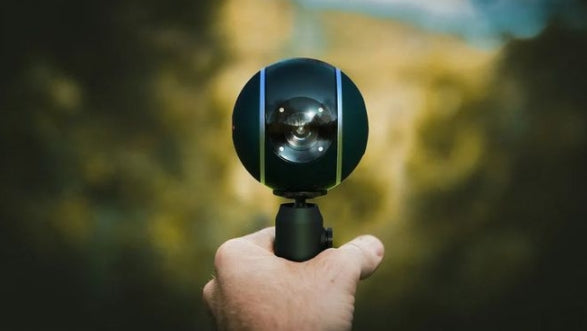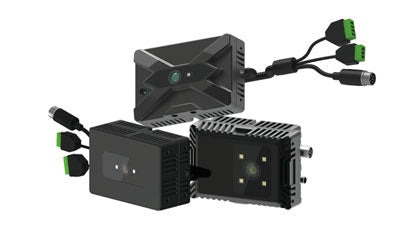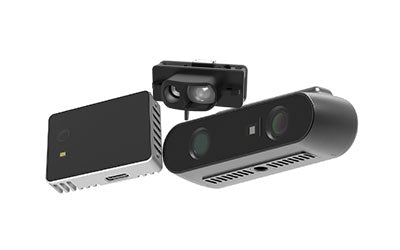TOF Camera vs Structured Light vs LiDAR: Comparing 3D Imaging Tech

With the development of artificial intelligence, autonomous driving, industrial robots, smart security, and virtual reality, 3D sensing technology has become increasingly crucial in a variety of application scenarios. The three main 3D vision technologies currently are TOF (Time-of-Flight) cameras, structured light, and LiDAR (Light Detection and Ranging). Each of these technologies excels in different aspects such as principles, performance, environmental adaptability, and cost. This article provides an in-depth comparison and comprehensive analysis of these three technologies, helping enterprises and developers make informed and rational technical decisions.
What is Structured Light?
Structured light is a 3D imaging technology that uses actively projected light patterns to scan an object. The core principle is to project a known pattern (such as stripes, chessboard grids, or dot arrays) onto the surface of the target object. These patterns become distorted when they encounter the object, due to the shape and depth of the surface. After the camera captures the distorted pattern, the system uses algorithms like triangulation to analyze the pattern changes and reconstruct the 3D contour and depth information of the object.
Structured light technology is known for its high accuracy, particularly for high-resolution 3D modeling of static objects at short distances. As a result, it is widely used in applications such as facial recognition on smartphones, 3D scanning, medical modeling, cultural heritage restoration, and gesture interaction. However, it is sensitive to external lighting, and strong ambient light can interfere with its performance, making it more suitable for indoor environments.
What is LiDAR (Light Detection and Ranging)?
LiDAR, which stands for Light Detection and Ranging, is a 3D sensing technology that measures the distance and spatial position of an object by emitting high-frequency laser pulses and receiving the reflected signals. The principle of LiDAR is similar to radar systems but uses laser beams with a shorter wavelength and higher precision.
LiDAR systems measure the time (TOF) or phase shift of the laser pulse from emission to return to calculate the precise location of the target. This enables the creation of 3D point cloud maps of the environment. LiDAR can achieve high-precision measurements over distances ranging from tens to hundreds of meters and is less susceptible to lighting conditions.
LiDAR is widely used in autonomous driving, drone surveying, robot navigation, smart traffic, tunnel and geological surveying, and more. While LiDAR’s cost and size tend to be higher, it excels in providing long-range, high-precision 3D sensing and is considered irreplaceable in these applications.
The Relationship Between TOF, Structured Light, and LiDAR
TOF (Time-of-Flight) cameras are a type of 3D imaging technology that calculates the distance to an object by measuring the time it takes for light to travel from the emitter to the object and back to the receiver. The core principle of TOF is similar to that of LiDAR, both based on the 'time difference' method for depth acquisition. Therefore, TOF cameras can be considered a "close-range version of LiDAR."
However, compared to traditional LiDAR, TOF cameras focus more on area-array imaging. This means that each pixel on the sensor simultaneously acquires depth information, enabling the generation of full-scene depth maps at high speed and high frame rates, particularly suited for dynamic targets and real-time processing.
In contrast to structured light, TOF technology does not rely on complex projected patterns but instead directly measures depth by calculating the time-of-flight of infrared light. This makes TOF more adaptable to environmental lighting and less susceptible to interference from external light sources, making it especially suitable for low-light or outdoor scenarios. Moreover, TOF systems are simpler in structure, consume less power, and exhibit lower latency, making them ideal for use in mobile devices, smartphones, AR/VR, and industrial automation applications that require real-time performance.
In summary, TOF shares similarities with LiDAR in terms of depth measurement, but its imaging method is more similar to that of structured light. By combining the advantages of both, TOF achieves a balance between cost, precision, speed, and applicability. As TOF technology continues to develop and chip integration improves, it is becoming a mainstream solution in the 3D sensing field.
TOF Cameras: Fast Perception Tool with Time-of-Flight Imaging
TOF cameras are devices that calculate the time taken for light to travel from the emitter to the object and then back to the receiver. This "time-of-flight" data can be used to precisely calculate the distance to the object and rapidly generate depth maps. TOF cameras are known for their strong real-time capabilities and good resistance to environmental light interference, and are commonly used in applications such as robot navigation, smart access control, facial recognition, gesture recognition, body interaction, AR/VR, and smart retail.
TOF technology can be classified into two types based on modulation methods: pulsed TOF and continuous wave TOF. The former offers higher precision, while the latter has lower power consumption. TOF cameras typically operate within a range of 0.2 meters to 10 meters and provide good depth resolution and dynamic performance, making them ideal for dynamic scenarios requiring quick responses. With advancements in CMOS technology and chip integration, the cost of TOF cameras continues to decrease, making them a preferred choice for mid-to-short-range 3D sensing applications.
Structured Light: The Preferred Solution for High-Precision 3D Modeling at Close Range
Structured light technology projects a specific pattern of infrared light (such as stripes or dot arrays) onto the surface of the target object. A camera then captures the image of the deformed pattern on the object’s surface, and algorithms such as triangulation are used to reconstruct the 3D structure of the object. This technology is best suited for close-range applications where high precision is required, particularly for static objects.
In the consumer electronics field, structured light is widely used in facial recognition systems on smartphones. For example, Apple's Face ID uses a TrueDepth camera, which is based on structured light. Structured light is also commonly used in desktop 3D scanners, small-scale modeling devices, and body interaction systems.
However, structured light is highly sensitive to external light conditions. It can be interfered with by strong light or outdoor environments, affecting the image quality. Additionally, it is less effective in sensing dynamic objects, making it more suitable for static scanning and close-range modeling tasks.
LiDAR: The Industrial-Grade Solution for Long-Range, High-Precision 3D Scanning
LiDAR (Light Detection and Ranging) is a technology that scans the environment using laser beams and measures the time or phase shift of the reflected light to obtain the 3D coordinates of objects in space. LiDAR offers extremely high measurement accuracy, achieving centimeter or even millimeter-level precision, and can cover distances from tens of meters to hundreds of meters. It is a core sensor in autonomous driving systems.
LiDAR technology is available in three forms: mechanical, semi-solid-state (e.g., MEMS), and fully solid-state (e.g., Flash LiDAR). Mechanical LiDAR uses rotating devices to scan 360 degrees, offering high precision but large size, high cost, and relatively low durability. Semi-solid-state and solid-state LiDAR aim to improve reliability and reduce costs while maintaining accuracy, making them suitable for embedded applications and consumer markets.
LiDAR works reliably in complex environments and lighting conditions, and it is widely used in applications such as autonomous driving, smart traffic, drone collision avoidance, high-precision mapping, tunnel surveying, and industrial inspection. However, the cost, size, and power consumption of LiDAR remain challenges that need to be addressed, especially in large-scale deployment scenarios.
Comparative Analysis and Application Suggestions
TOF cameras, structured light, and LiDAR each have unique features and are suited for different application scenarios. TOF cameras are ideal for mid-to-short-range applications that require high real-time performance, good environmental adaptability, and cost control, such as smart robots, body interaction, security monitoring, and industrial visual guidance.
Structured light is more suitable for applications requiring high precision and stable environments, such as 3D face recognition on smartphones, 3D printing model acquisition, and cultural heritage scanning. LiDAR is the best choice for long-range, high-precision 3D sensing, and is particularly suitable for autonomous driving, drone surveying, railway traffic, and port automation for environment modeling and path planning.
In terms of cost, structured light has the lowest integration threshold, followed by TOF cameras, while LiDAR hardware and algorithm costs are relatively higher. In large-scale commercial deployment, TOF cameras and structured light offer cost advantages. In terms of precision and resistance to interference, LiDAR is the clear winner, especially in outdoor complex environments.
Conclusion: The Collaborative Development Trend of Three Technologies
As developments in computer vision, optical devices, chip manufacturing, and AI algorithms continue, TOF cameras, structured light, and LiDAR are being optimized and upgraded to become more compact, accurate, and adaptable. In the future, these technologies may not be mutually exclusive but could work together in the same system to meet the sensing needs of different scenarios. For example, advanced smart devices might combine TOF and structured light to achieve both long-range and high-precision recognition, while autonomous driving systems might combine TOF cameras and LiDAR for all-weather, multimodal perception.
In the era of advanced 3D vision technology, understanding the advantages, limitations, and boundaries of each imaging technology is crucial for designing efficient and intelligent sensing systems. Developers and enterprises should scientifically select the most suitable 3D sensing solution based on their application requirements to enhance product performance and market competitiveness.
Synexens 3D Of RGBD ToF Depth Sensor_CS30
Our professional technical team specializing in 3D camera ranging is ready to assist you at any time. Whether you encounter any issues with your TOF camera after purchase or need clarification on TOF technology, feel free to contact us anytime. We are committed to providing high-quality technical after-sales service and user experience, ensuring your peace of mind in both shopping and using our products.






